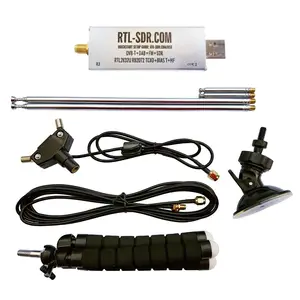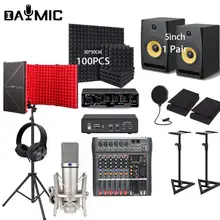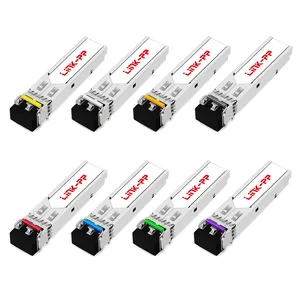An RTL-SDR dongle is a small, affordable device that allows users to turn their computer into a versatile software-defined radio (SDR). It is a powerful tool for radio enthusiasts, hobbyists, and those interested in radio communication.
Introduction to RTL-SDR Dongle Features
The RTL-SDR dongle, short for Realtek Software-Defined Radio, is a versatile and affordable device that allows users to explore and interact with a wide range of radio frequencies using software-defined radio technology. One key feature of the RTL dongle is its broad frequency coverage, typically from 24 MHz to 1.7 GHz. It enables users to tune into various signals, including FM radio, amateur radio, air traffic control, etc. Another essential feature is its ability to receive and process signals using software-defined radio (SDR) applications on a computer. This flexibility allows users to decode and analyze different signals based on the software. The RTL-SDR dongle is also known for its ease of use, as it connects to a computer via USB and is compatible with various operating systems. Additionally, it is a cost-effective solution compared to traditional hardware-based radio receivers, making it accessible to a wide range of users interested in exploring radio frequencies. Furthermore, the RTL-SDR dongle often comes with a small telescopic antenna for primary reception, and users can enhance its capabilities by connecting external antennas for improved signal strength and range.
Types of RTL-SDR Dongles
RTL-SDR dongles come in various types, each offering specific features for different applications. One common type is the RTL2832U-based dongle, widely used for general-purpose radio frequency (RF) reception. These dongles often range from around 24 MHz to 1.7 GHz, making them suitable for various signals like FM radio, aircraft communication, etc. Another type is the RTL-SDR Blog dongle, known for its enhanced performance, lower noise figure, and improved sensitivity compared to standard dongles. Radio enthusiasts often prefer these for tasks like monitoring trunked radio systems and decoding signals. The NooElec NESDR series is another popular type. Nooelec SDR dongle offers a range of dongles with extended frequency coverage, better sensitivity, and enhanced filtering. Some dongles include additional features like built-in filters and improved components for better signal reception. When choosing an RTL-SDR dongle, it's essential to consider factors such as frequency range, sensitivity, and additional features based on specific needs.
Versatility of RTL-SDR Dongles
An RTL-SDR dongle is a versatile device with numerous applications. One everyday occasion for using an RTL-SDR dongle is amateur radio and hobbyist activities. Enthusiasts utilize these dongles to explore and decode various radio signals, such as airplanes, weather stations, or satellites. The dongle's software-defined radio capability allows users to listen to, analyze, and decode different frequencies, offering an engaging experience for those interested in radio communication. Another frequent use of RTL SDR USB is in monitoring and interpreting radio signals for security purposes. Security professionals and researchers employ these devices to detect and study signals within their environments, ensuring the integrity of wireless communication systems. RTL-SDR dongles can help identify potential vulnerabilities or unauthorized transmissions, making them valuable tools for maintaining secure communication networks. Furthermore, RTL SDR dongle software has applications in educational settings. They are affordable and accessible tools for teaching students about radio frequency, signal processing, and communication systems. RTL-SDR dongles also play a role in the field of radio astronomy. Radio astronomers use these devices to capture and analyze radio frequency emissions from celestial bodies.










































 浙公网安备 33010002000092号
浙公网安备 33010002000092号 浙B2-20120091-4
浙B2-20120091-4